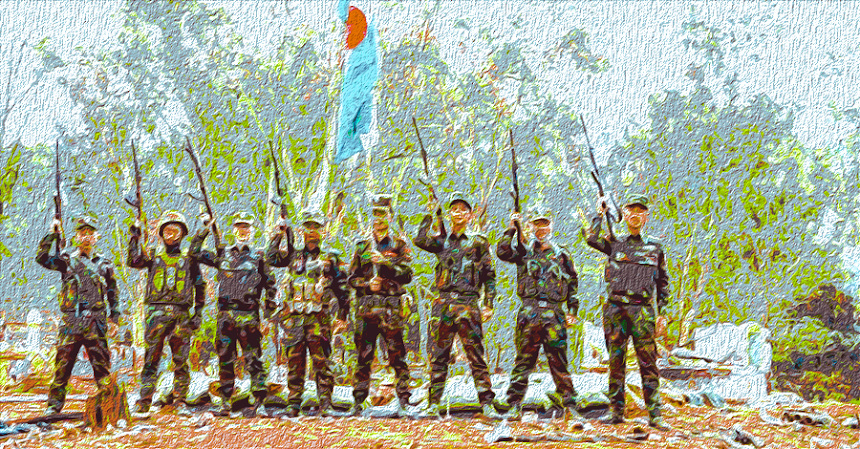Myanmar Spring Chronicle – December 23 Insight by MoeMaKa Media
**China’s Enigmatic Role in Northern Shan State Unraveled**
As the conflict in northern Shan State unfolds, the intricacies of China’s involvement have become increasingly challenging to decipher. A meeting held in Kunming, China, around December 8, involving leaders of three northern armed groups and high-ranking members of the military council’s peace negotiation committee, announced a ceasefire and further talks, an announcement that stirred speculation and confusion.
Since the announcement on December 11, the intensity of armed conflict in northern Shan State has shown a mixed response. While some areas have witnessed a decrease in hostilities, others remain embroiled in fierce battles, leaving observers to question the success of the ceasefire talks and the extent of China’s influence.
China’s role in the 1027 operation, a military endeavor that caught many by surprise, has become a perplexing puzzle. Various speculations abound, with some positing that China may have instigated or endorsed the operation to reassert influence over the military council.
The Chinese Foreign Ministry has issued at least three statements since December 11, addressing questions about the armed conflict in northern Shan State. Reports from December 23 suggest that representatives of the military council have made a second visit to China this month. Lt. Gen. Min Naing of the State Administration Council (SAC), who led a previous delegation, is believed to be exploring China’s intervention in the ongoing conflict or seeking to leverage China’s influence over the northern armed groups to de-escalate the situation.
Areas where conflict persists, such as Namhkam, Muse 105 miles, Namhsan, Mongton, and Namtu, home to the TNLA, have seen heightened tensions. The proximity of the fighting to the city of Muse poses a potential threat to China-Myanmar border trade.
Notably, the conflict zones include areas traversed by oil and natural gas pipelines connecting Kyaukphyu Port in Rakhine State to Yunnan Province in China. China’s concerns about the security of these vital energy arteries may be escalating, potentially impacting its global “One Belt, One Road” initiative.
While the extent of China’s influence over armed groups in Northern Shan and Eastern Shan remains challenging to quantify, its involvement in the 1027 operation’s strategic planning and execution is difficult to prove definitively. The military council, despite its reservations, appears to acknowledge China as a crucial player in navigating the pressures exerted by northern armed groups.
The military council’s reluctance to fully trust China, in contrast to its relationship with Russia, is evident. Despite anti-China demonstrations orchestrated by various factions, including national extremists, the USDP party, and the military, the military council recognizes China’s importance in alleviating the pressures from northern armed groups.
The 1027 operation, marked by military setbacks, has underscored the military council’s vulnerability. As unexpected losses continue in various parts of the country, the council views China not only as a diplomatic partner but as an essential agent capable of swiftly mitigating its predicaments. The evolving dynamics between China and the military council remain a critical factor in the complex landscape of Myanmar’s current political and military upheaval.

